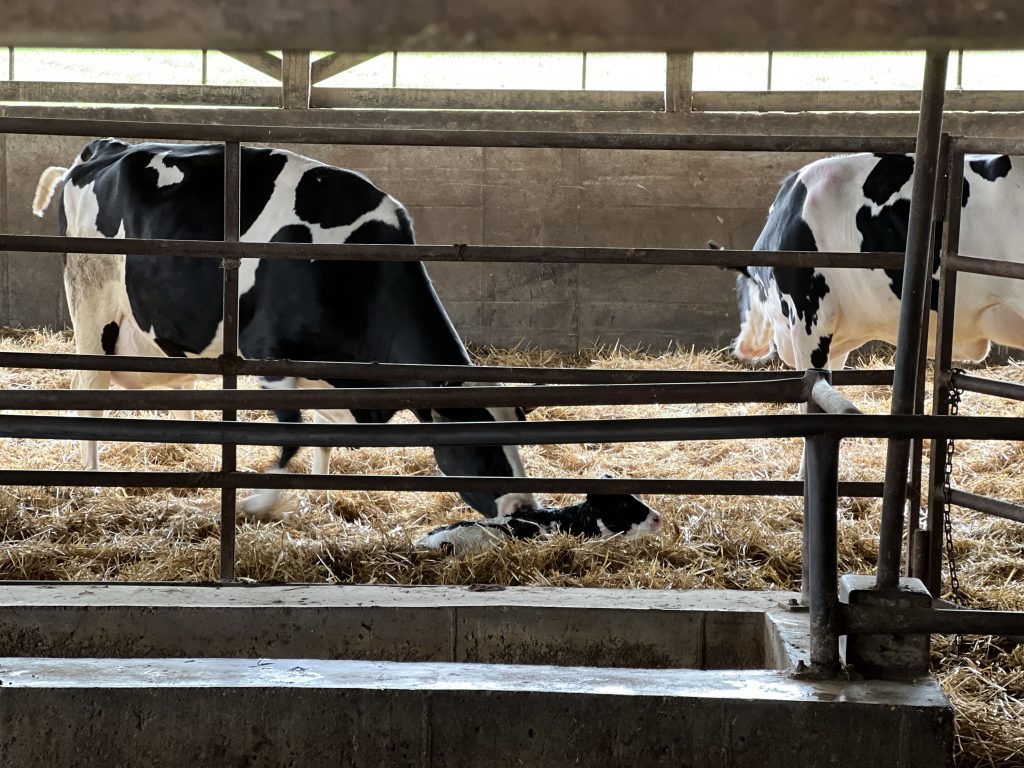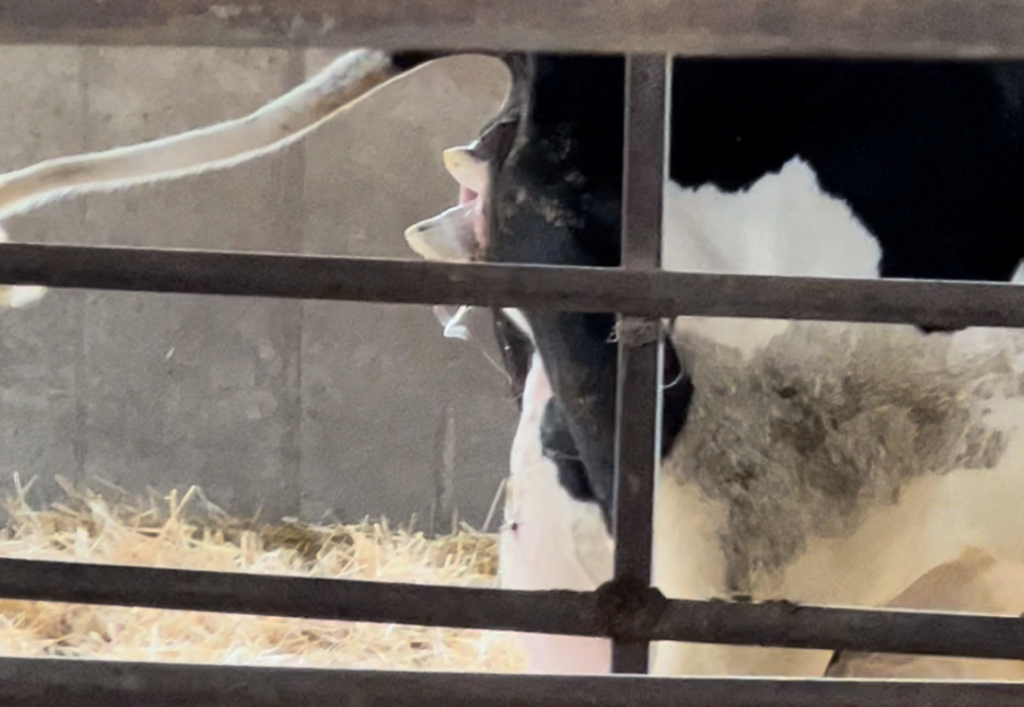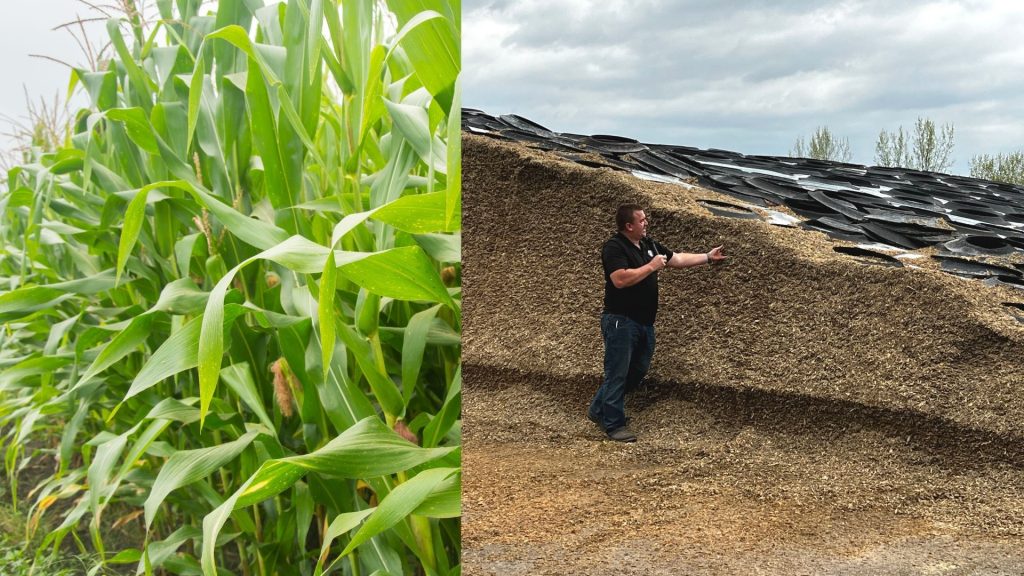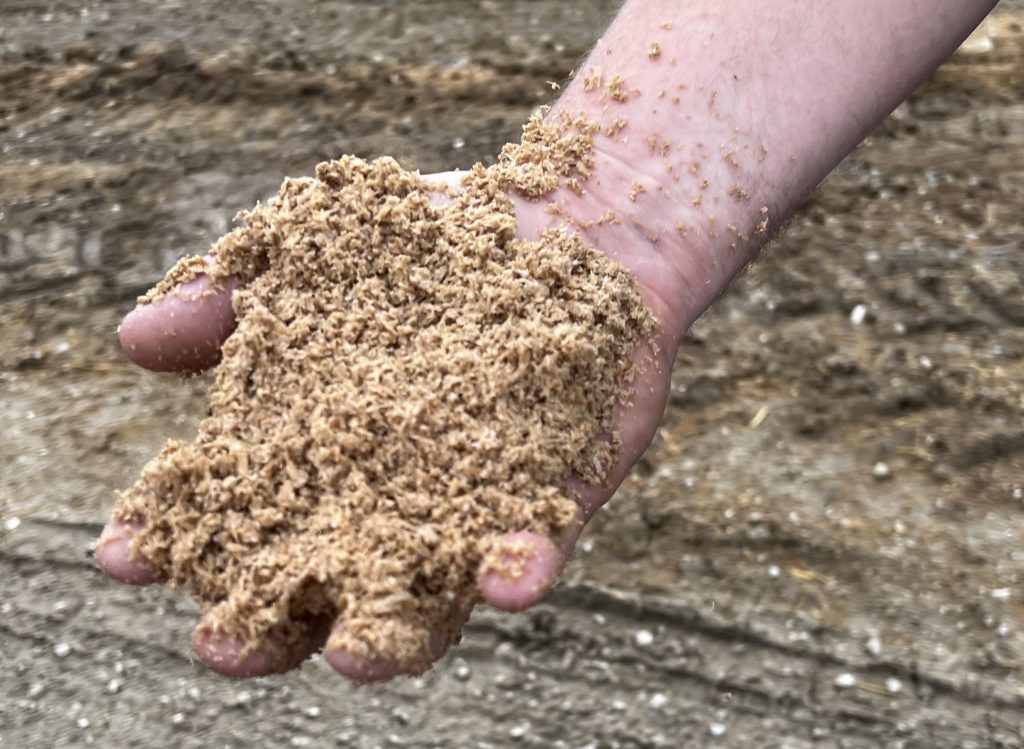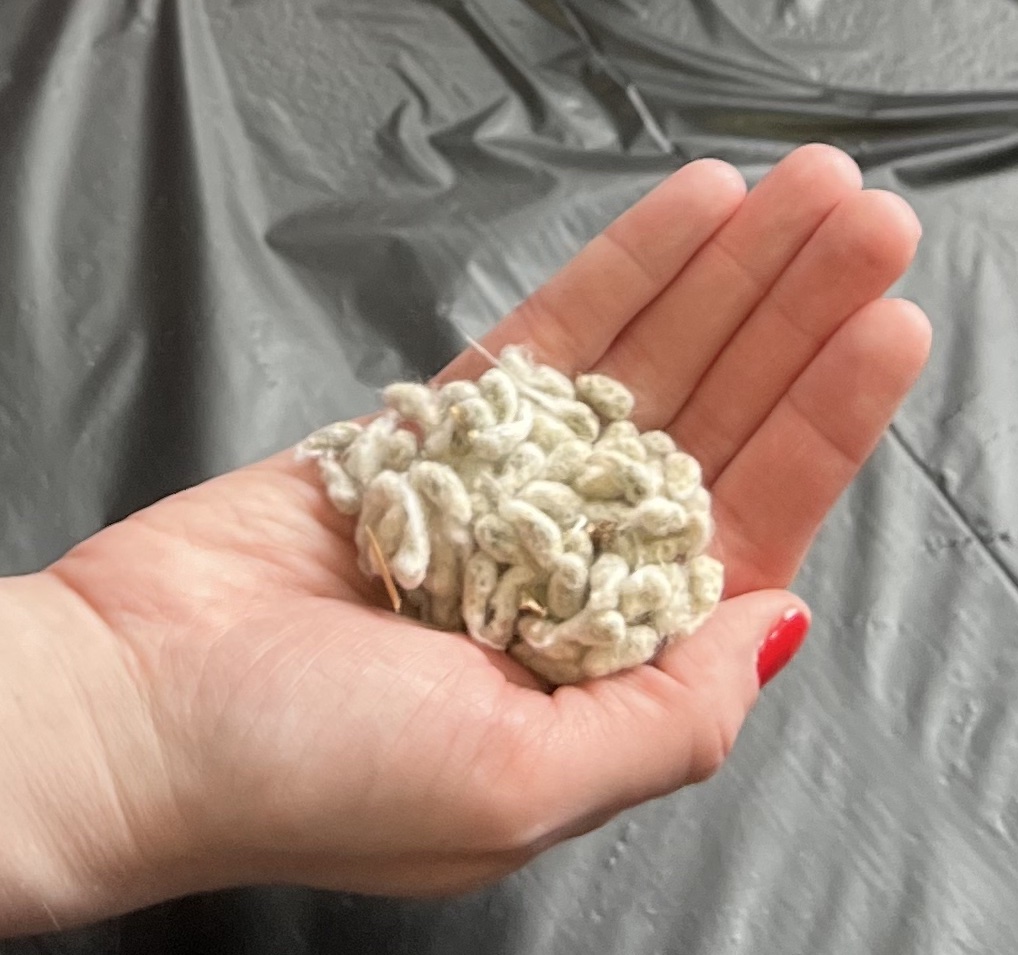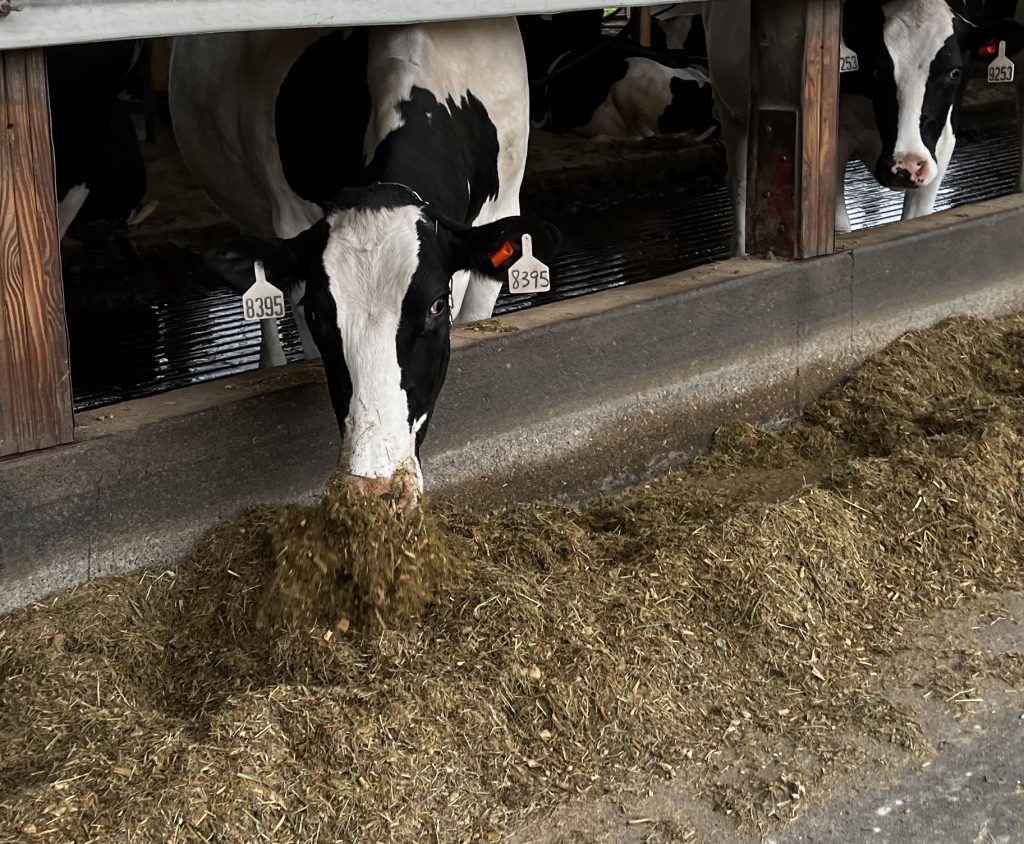This post about a sustainable dairy farm is sponsored by Midwest Dairy. I was compensated for my time, but all wording and opinions are mine.
In the first podcast I posted, background on how my love of discovery about the environmental side of farming led me to spend my entire career in agriculture. And I love learning more. There are always new things to see and do. So when I was invited out to see a dairy farm just an hour from home, I jumped at it. That’s how I ended up spending the day at the Riegel’s Dairy Farm outside of St. Louis with Brian Riegel giving us a tour and talking through everything.
Since I’ve been to several dairy farms in the past, some of the things that excite newcomers are a bit more familiar to me, but there is always something to get excited about. And this definitely proved the case while we were in the maternity barn.
Calf Just Born
We saw a calf that had just been born — mom was still cleaning it up and before long it had gotten up on it’s feet walking!
And then we realized she was getting ready to give birth to a twin! You can see the hooves, below. But quite frankly the cow was so focused on the first calf that she wasn’t trying to push this one out. The new one was born about 20 minutes later I hear, and both are healthy & were up walking around.
Looking at the Dairy Barns
Walking around, it was easy to notice how much the barns are thought through. The maternity barn had areas where the farm team could separate a cow that’s ready to give birth from the others, When a new calf is born, Brian explained, the momma cow can perceive others (cows, people, etc) as a threat to the calf so more privacy is warranted.
Cows that are currently being milked are in another barn nearby, with ready access to the milking parlor. And their day is focused on a good bit of eating and hanging out. We saw cows chilling on beds of sand and a flush of water came through to wash the manure to a lagoon that is monitored and will go back onto the farm’s land to fertilize the crops.
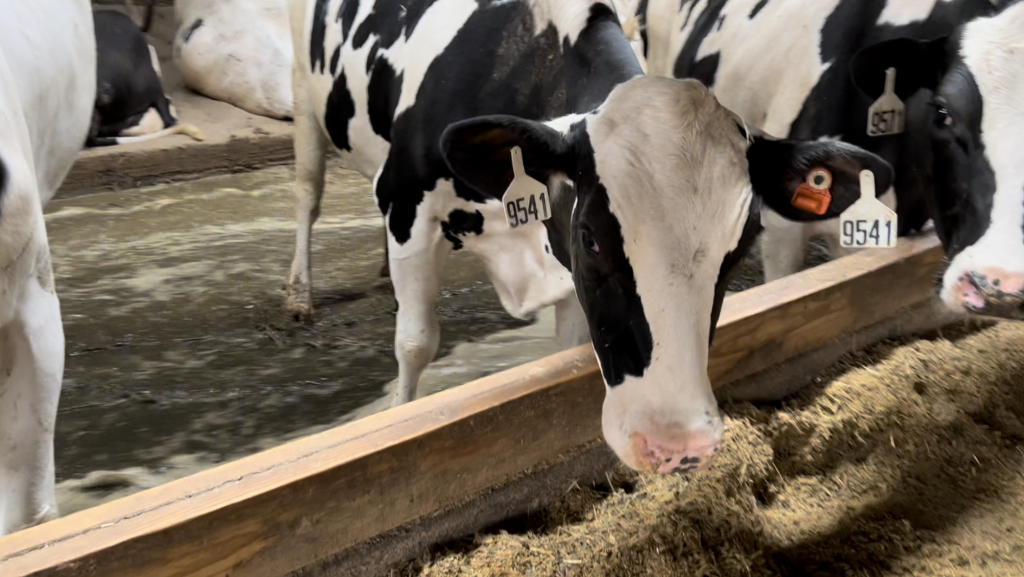
If you look closely you see cows laying down on sand beds in the background, while a flush of water pushes manure toward the lagoon.
Brian talked about how it’s a circle of sustainability. The manure feeds the crops which feed the cows. That’s part of upcycling but there was a lot more when we got into the various kinds of feed grown or supplied to the cows.
Sustainable Feeds the Riegels Use
Dairy farmers are big on nutrition, making sure the cows are getting a balanced diet that really suits the calf or cow where they are. He talks to us about what cows eat and why.
Brian points out that with the ruminant’s stomach, they need a lot of ruffage. People use various types of feed to cover that, his farm grows corn for silage which offers a lot of fiber and energy for the cows according to the University of Nebraska. Silage is a way of taking the entire corn plant (leaves, corn cobs, etc), shredding it up to smaller pieces and fermenting it under tarps and tracking its quality. And that fermenting process encourages the growth of good bacteria for the cow’s digestive system.
Brian took a handful of the silage to show us. The smell clearly lets you know immediately it’s fermented! Not many in our group wanted to eat it though!
As we walked around, he showed us some of the other components of feed that he doesn’t produce. And several of them are left over from making things people like, that seems like a core sustainable dairy practice.
One component that grabs the attention of beer drinkers is brewer’s grain! It’s sent to farms wet and was pretty warm to the touch. But being so close to St. Louis, Brian said there is a lot of brewer’s grain readily available and experts point to the benefits of the high protein content it offers a cow’s diet. Love that it gets upcycled rather than trashed — that protein goes back into cows making milk for my high protein yogurts and all. When we talked to the guys about farming connections at a brewery, I forgot to even ask about this!
They also use some of the byproducts from a plant that makes grits, not sure a lot of folks in the Midwest eat grits, but down south, I’m guessing there is plenty to dispose of. Brian said it’s a bit dustier than most hominy but it’s similar. I missed snagging a photo of it though.
The last of the food waste type byproducts Brian showed us that his farm upcycles is cottonseed. Cottonseed provides cows with energy and protein as well as some fiber! Everyone got photos of cottonseed! And it’s my favorite — I mean I have been JPlovesCOTTON on Twitter for more than a decade and started blogging in what became Hundred Percent Cotton! Of course Grounded by the Farm (podcast/website/social media) is sort of a combination of so many of those ideas.
All of this stuff gets mixed together with a big machine that delivers it to the cows throughout the day. And the cows enjoy it!
Lots of Sustainable Dairy Farmers
I’ve seen lots of other farmers who do similar kinds of upcycling and love that frequently different parts of the country have some different things that fit a cow’s needs. For instance, dairy cows in Florida get citrus pulp that’s left over from making orange juice and things! And according, to the info Midwest Dairy gave me, that means up to 306 million pounds of food waste can be captured and used by dairies, keeping it from going to landfills. They have a video that captures some of the other sustainable dairy pieces too.


